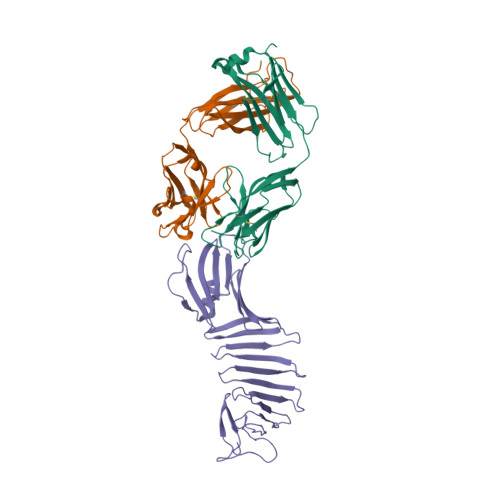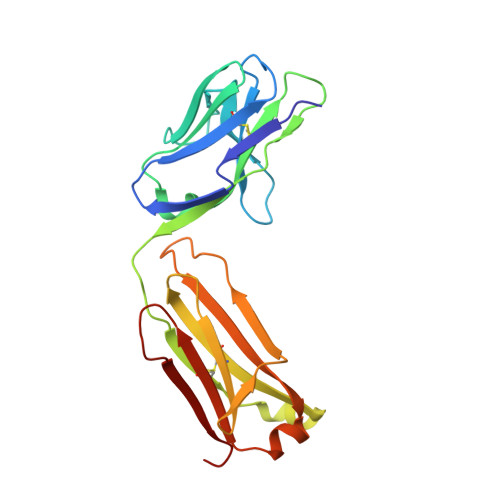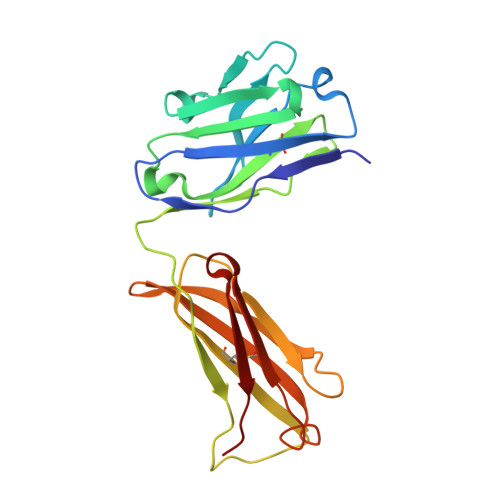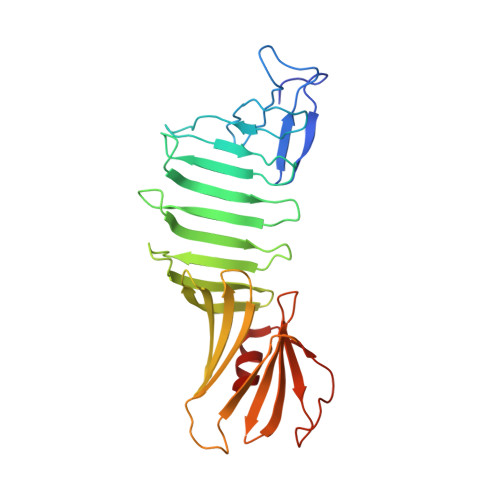Structural identification of a key protective B-cell epitope in Lyme disease antigen OspA.
Ding, W., Huang, X., Yang, X., Dunn, J.J., Luft, B.J., Koide, S., Lawson, C.L.(2000) J Mol Biology 302: 1153-1164
- PubMed: 11183781
- DOI: https://doi.org/10.1006/jmbi.2000.4119
- Primary Citation of Related Structures:
1FJ1 - PubMed Abstract:
Outer surface protein A (OspA) is a major lipoprotein of the Borrelia burgdorferi spirochete, the causative agent of Lyme disease. Vaccination with OspA generates an immune response that can prevent bacterial transmission to a mammalian host during the attachment of an infected tick. However, the protective capacity of immune sera cannot be predicted by measuring total anti-OspA antibody. The murine monoclonal antibody LA-2 defines an important protective B-cell epitope of OspA against which protective sera have strong levels of reactivity. We have now mapped the LA-2 epitope of OspA using both NMR chemical-shift perturbation measurements in solution and X-ray crystal structure determination. LA-2 recognizes the three surface-exposed loops of the C-terminal domain of OspA that are on the tip of the elongated molecule most distant from the lipid-modified N terminus. The structure suggests that the natural variation at OspA sequence position 208 in the first loop is a major limiting factor for antibody cross-reactivity between different Lyme disease-causing Borrelia strains. The unusual Fab-dominated lattice of the crystal also permits a rare view of antigen flexibility within an antigen:antibody complex. These results provide a rationale for improvements in OspA-based vaccines and suggest possible designs for more direct tests of antibody protective levels in vaccinated individuals.
Organizational Affiliation:
Biology Department, Brookhaven National Laboratory, Upton, NY 11973, USA.



















